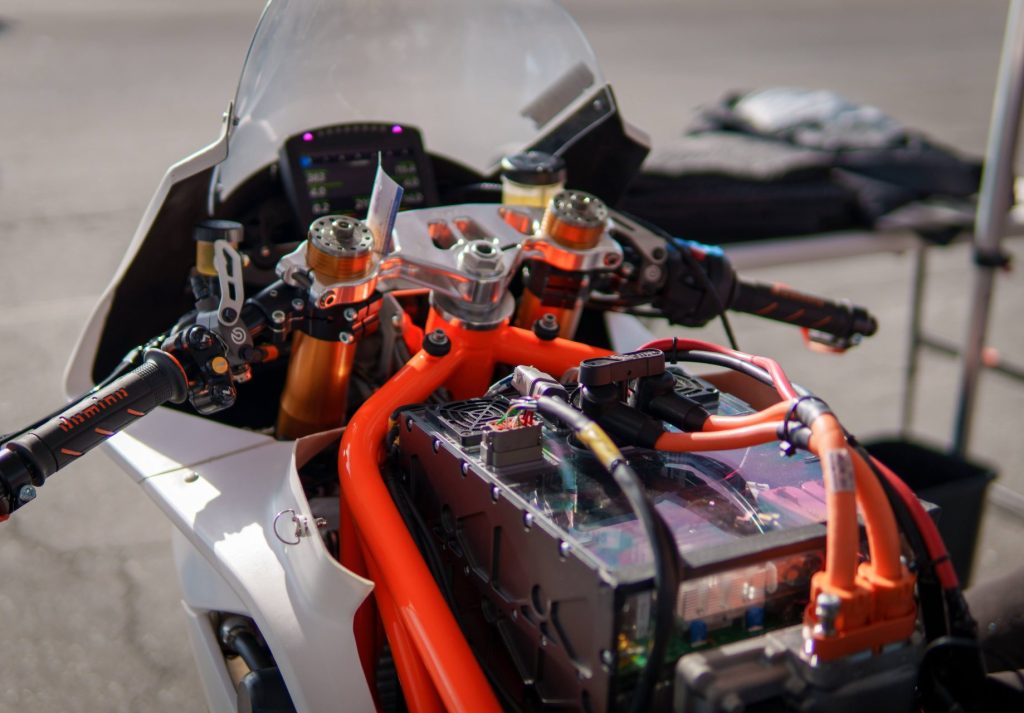UK-based sensor technology specialist Metis Engineering has partnered with California’s Lightfighter Racing to advance the safety and performance of electric superbikes on the racetrack.
The collaboration sees Lightfighter Racing integrate Metis Engineering’s Cell Guard battery safety sensor into its multiple race winning cutting-edge Lightfighter v3.0 electric superbike – a purpose-built, race-ready machine designed to rival and outperform petrol-powered competitors.
Lightfighter Racing, founded by electric motorcycle pioneers Brian Wiseman and Ely Schless, is on a mission to challenge the long-standing dominance of internal combustion engines in motorsport. Their all-electric Lightfighter v3.0 competes in the American Federation of Motorcyclists (AFM) championship, racing in the fiercely competitive middleweight superbike class typically dominated by 600cc to 750cc petrol bikes such as the Yamaha R6 and Suzuki GSXR-750.
Metis Engineering CEO, Joe Holdsworth said: “We’re proud to be supporting Lightfighter Racing in their ambitious engineering programme. Motorsport is the ultimate testing ground; there’s nothing quite like it for pushing boundaries and exploring the limits of performance. Cell Guard was designed precisely for these conditions, providing the real-time battery health diagnostics needed to do so safely and confidently.”
At the heart of Lightfighter’s success is a commitment to not only speed and agility, but also operational safety. The Lightfighter v3.0 is powered by a water-cooled Parker GVM 210 IPM AC motor producing 115kW (154hp), 324Nm of torque at the gearbox output, and a peak speed exceeding 11,000 rpm. This is matched with an actively air-cooled lithium-NMC battery pack operating at 383V nominal (440V peak), capable of delivering over 300A peak current. The result is an ultra-lightweight, 181kg electric superbike with the performance credentials to race head-to-head with its petrol-powered counterparts.
Recognising the inherent thermal and safety challenges associated with high-performance battery systems, Wismann’s team turned to Metis Engineering’s Cell Guard sensor to provide an additional layer of real-time monitoring and fault detection.
Designed and manufactured in the UK, Cell Guard is a compact multi-parameter sensor that detects early indicators of battery failure, including volatile organic compounds (VOCs), temperature spikes, pressure increases, humidity shifts, moisture ingress, shock and impact loads, and the presence of hydrogen. These environmental parameters are crucial in identifying the early stages of thermal runaway events, potentially catastrophic failures that traditional battery management systems (BMS) often miss.
Brian Wismann, Co-Founder and CEO of Lightfighter Racing, explained: “Through our racing efforts, we realized that conventional battery monitoring systems often react too late in such a dynamic environment as motorsport to prevent damage and potential escalation from a cell issue. We needed a way to detect the earliest signs of cell distress though off-gassing, which Cell Guard has been able to provide us with. This early detection of an issue with the cell has become an important and valuable addition to our overall safety strategy.”
The integration of Cell Guard into Lightfighter’s Motec-based vehicle management and data acquisition system, used widely across professional racing, including British Superbikes, has not only enhanced safety but also provided unexpected analytical benefits. During race testing, the team observed spikes in VOC readings when overtaking petrol-powered bikes. After investigation, they discovered Cell Guard was detecting exhaust gases being drawn into the battery cooling system—demonstrating its high sensitivity and giving engineers a new window into external environmental factors affecting the bike.
Since adopting Cell Guard, Lightfighter Racing has been able to operate their electric race platform with greater confidence, pushing battery performance further while maintaining critical safety oversight. The sensor has also proven to be a valuable educational tool for engineers and riders unfamiliar with electric propulsion, offering deep insights into battery behaviour and system diagnostics.
“Electric racing is inevitably going to be a larger part of all forms of motorsport in the future,” added Wismann. “We’re excited to be a part of that future and shape how to do it safely. Metis Engineering’s Cell Guard has become a critical tool in that effort.”
As electric motorsport continues its rapid evolution, partnerships like this highlight the essential role that advanced sensor technologies play in enabling safe, high-performance racing platforms. By combining Lightfighter’s race-focused innovation with Metis Engineering’s expertise in battery diagnostics, the two companies are redefining the limits of what’s possible in electric two-wheel racing.
Interested in hearing about the latest North American manufacturing news right in your inbox each week?
Sign up to The Manufacturer Digital Briefing – North American Edition




